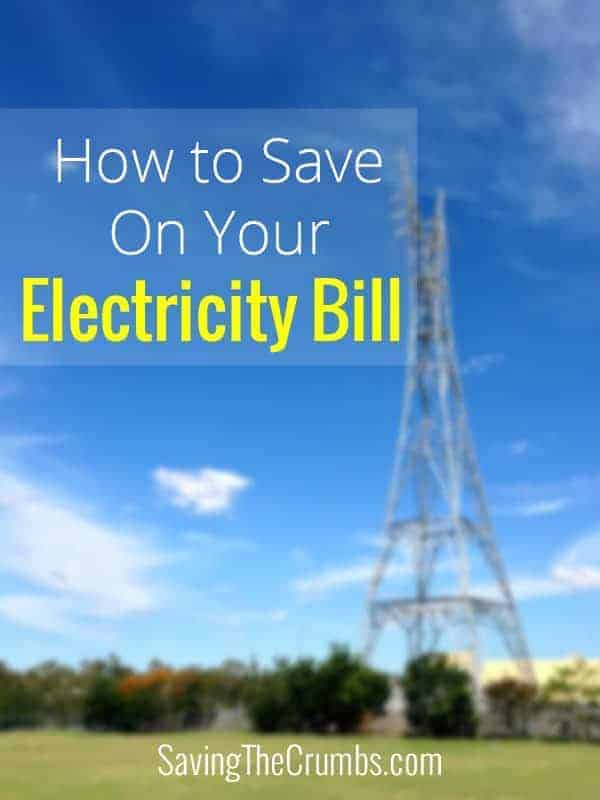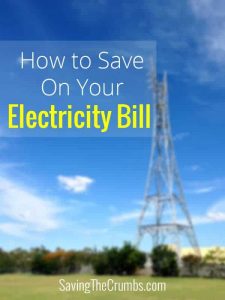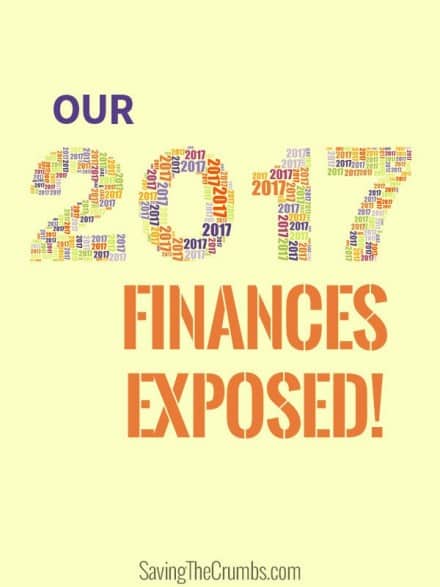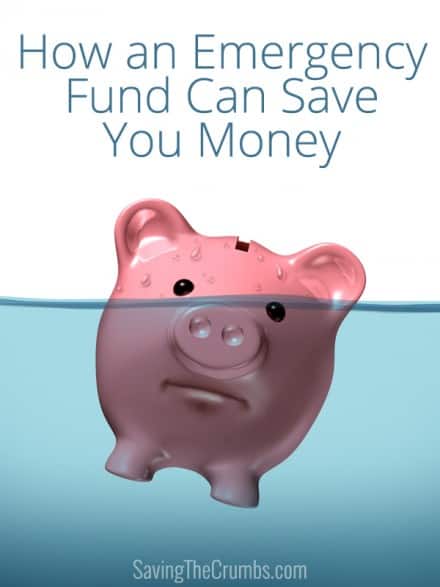For most of my life, it never occurred to me that there was a cost every time I plugged something into a wall outlet. My first recollection that electricity actually cost money was when I lived in a dormitory in high school. The principal announced that electricity was getting expensive and asked that we redouble our efforts in making sure the lights and fans were off when we left each room. I had always been told that leaving lights on in unoccupied rooms was wasteful, but somehow I never knew that it was wasting MONEY! (Yes, I wasn’t always the miserly Crumb Saver you see before you today.)
Then one day I grew up and started paying my own electricity bill. Let’s just say that I had an epiphany. I realized very quickly that every single outlet in my house was a mini-vacuum attached to my bank account. Every watt of power being used translated into precious crumbs being consumed. My hunch is that most people still think about their electricity usage much like how I use to as a young man—meaning, they don’t!
Electricity is invisible so it’s easy to neglect. Yet it is probably one of the largest recurring expenses in all of our lives. This is an ongoing monthly expense, that can tally up to be thousands of dollars each year. This means that to really gain control over our finances and to maximize the crumbs saved over time, we’ve got to tackle this invisible gorilla in the room.
How Much Do You Use?
The average American household consumes about 903 kWh* of electricity per month according to the US Energy Information Administration. But due to large variations of electric rates around the country, the average cost per month can range from $100 to $200. At our home, our average monthly household electricity usage is around 450 kWh, which translates to about $50/month. This usage is half the national average, even though everything in our house is powered by electricity—heating and cooling, water heater, range, everything. The national average includes huge numbers of homes that are partially powered by natural gas, propane, oil, etc.
Do you know how much electricity you use per month?
To find this information, just look at your previous power bills and they should tell you how much you’ve been using each month. Average the past 12 months and you’ll get a good idea about how much you typically use. You’ve got to have this as a starting point if you’re serious about whacking your power bill down to size. If you’ve got an awesome electric utility like me (EPB), you may have a smart meter installed at your house which allows you to monitor you energy usage in near real-time on their website. The geek inside of me weeps tears of joy over stuff like this.
Breaking Down the Energy Hogs
Once you know your total monthly usage, do you know what the biggest energy hogs are which contribute to that figure? Just like our overall living expenses, we’ve got to understand this beast in order to take it down. Once you have this information, attack the biggest energy-guzzlers first. It makes no sense to worry about whether to turn off your computer vs. putting it on sleep mode when you leave your A/C running with the windows wide open!
This is a list of the top energy-sucking areas in the typical home organized roughly in order of how much electricity they use. Naturally, the rate at which these things affect each household’s bill will be different based on habits, lifestyle, climate, type of appliance, etc. So view this as a rough guide to point you in the right direction:
- Heating – Assuming you’re on electric heat like me, heating your home can account for as much as half or more of your energy usage.
- Air Conditioning – This is essentially the same thing as heat, only in reverse in the summer time.
- Lighting – Lighting can be extremely costly, running as high as a quarter to a third of home electricity costs.
- Water heater – Unless it runs on gas or some other type of fuel, water heaters can account for as much as 18-25% of energy.
- Dryer – Dryers can be as much as 10-15% of your energy usage.
- Refrigerator/Freezer – If you’re using a dinosaur (i.e. made before 2000) your refrigerator or freezer is costing you big time. Maybe as much as 20% of all energy usage. Newer models with energy star ratings will do much better.
- Other appliances – Big screen TVs like plasma can use more power than a refrigerator. Some inefficient washers can also drain a ton of power. The home office with all those computers running all the time and the entertainment systems can drain huge amounts of energy.
The Best Immediate Solution
We’ll look at tips to save in each of these categories in the future, but before you think you’re going to have to go out and buy all new appliances. I’ll leak the biggest tip of all right now.
Look at this list and figure out ways to use them less!
That doesn’t sound very exciting or sophisticated, but it works. It won’t cost you a dime upfront, no upgrading to new appliances, all it takes is a bit of creativity and willingness to adjust your habits a little. Sure, this won’t work for each category (hard to use your refrigerator less) but think about it:
- Opening the windows when the temperature is warmer/cooler (depending on the season) instead of turning on the heat or AC can save big bucks.
- Forming the habit of turning off all the lights that you aren’t using, just like my high school principal said, really can make a difference in your electricity bill.
- Taking shorter showers, can save huge in the hot water heater. And use cold water to wash your clothes and dishes.
- Here’s a biggie. Hang dry your clothes! You won’t be using your dryer at all, instantly saving you 100%. (We use something like this drying rack.)
- Sell your big screen TV. 🙂
We’ll be sharing other techniques and strategies to save electricity, but always start with the things that cost the least but yields the largest results. Use less, live simpler, change your habits, save more!
Now do you know what’s the only thing better than saving money on your electricity bill? It’s getting PAID by your electric company! In our next post, I’ll be sharing with you how rather than sending a check to the power company each month, they pay us instead!
In the meantime, let us know what creative ways YOU use to save on power!
*A kWh stands for kilowatt-hour, the standard way electricity usage is measured. One kWh is equivalent to the amount of power a 100-watt light bulb uses when left on for 10 hours.







